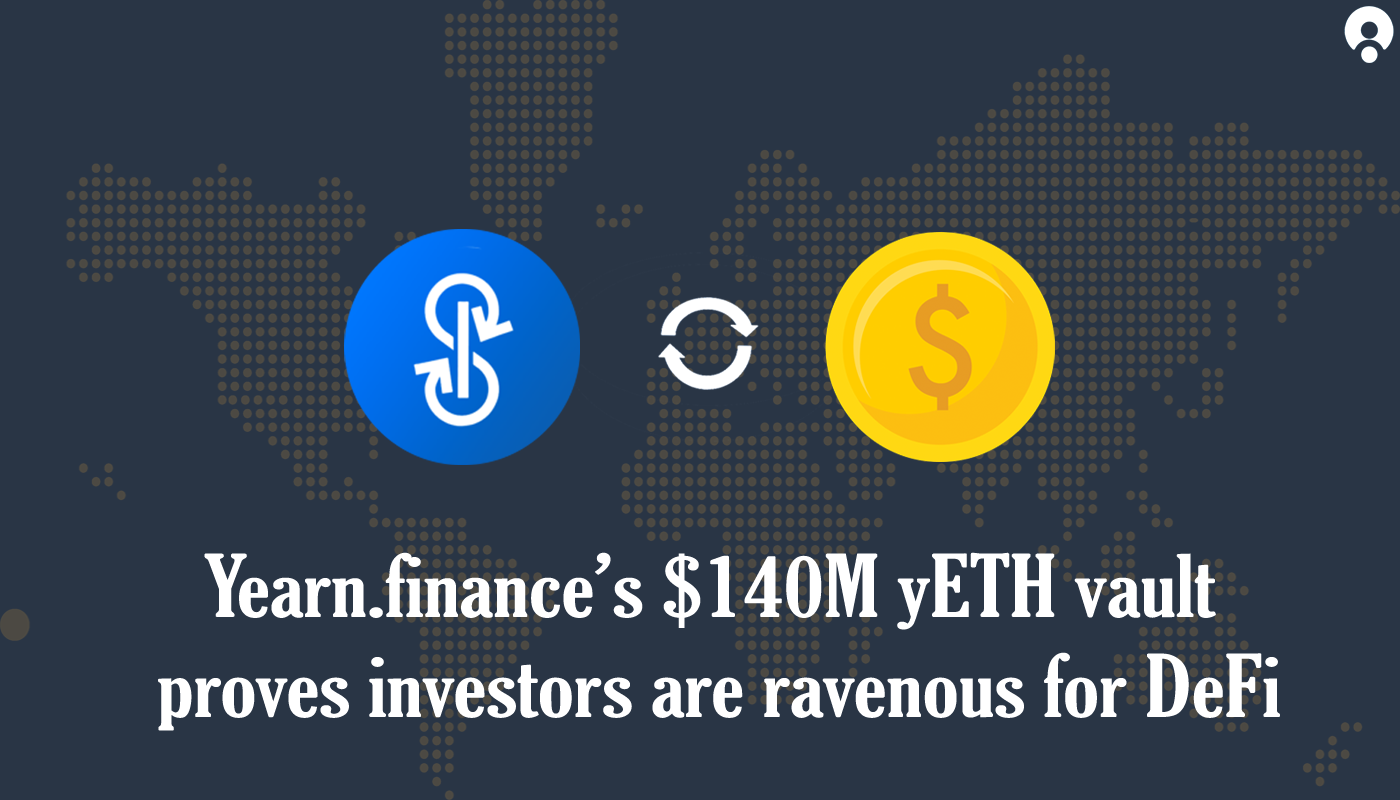The yETH vault from Yearn.finance took $140 million for 48hours in EDT and announced that the next DeFi frontier could be automated investment.
Yearn.finance has released the new yvault technique, yETH , an automated DeFi yield-farming protocol. YVault strategies are a series of predefined actions allowing users to deposit money and to automatically submit it to liquidity pools that produce high returns and other token benefits.
The yETH vault and the yWETH vault and a few other changes were released on 2 September. The yWETH vault is the same as the yETH vault but uses ETH, an ERC-20 token with an ETH supply.
The yETH vault strategy has four main steps, according to a recent client newsletter from Delphi Digital. First Ether is deposited and then used for a 200 percent collateral ratio to acquire DAI via MakerDAO. The sum of interest is paid and the DAI sent to a stablecoin cash protocol, Curve Finance.
The DAI will then be locked and interest received (from the Curve DEX trading feasts) and additional CRV tokens. CRV is then sold back to the yETH vault for Ether.
The yVault Strategy, which is then distributed to YFI token holders, has an interest rate of 90% and the 0.5% withdrawal fee.
Yearn.Finance’s yETH vault and the future of DeFi
The yVault strategies currently in effect at Yearn. Finance generate mass returns for their owners and, for yETH, it gives the MakerDAO MKR, Ether and, of course, YFI owners a bullish outlook. The explanation is that token holders earn 0.5% withdrawal fees for YFI.
Due to the large volume yeth yields, yETH is currently committed at 345.120 (139 million dollars) and the analysts expect the volume to increase one day after its launch.
While it is risky for investment, it is to allow developers to create rock solid code and the protocols are to be audited by several. The new vault system will also be a rewarding mechanism for developing new strategies. Delphi Digital also pointed out in the study several reasons for Year Finance ‘s success:
“It’s hard to give just one reason why our team is so excited about YFI. There is clearly a product-market. It’s easy to use, especially with the efficiency it achieves for fees. The yields are attractive and it generates revenues for token holders without dilution.”
Is DeFi becoming too speculative?
Yearn. Finance warned in the announcement of yETH and wETH’s vault tweet that the voults are at high risk as they are “debt-based vaults with a high risk”
The risk here listed is a liquidation risk, that means that the user’s Ether positions are liquidated if the Ether drops to a certain price. This is done to ensure that the DAI is linked by the USD as DAI is protected by ETH at a rate of 200%.
At the moment, there is a collateralization ratio of 150%, indicating that all the funds deposited in these vaults may be lost very extremely.
Moreover, the current DeFi environment poses general risks and problems, including the high gas charges needed for smart contracts to be coupled with the interaction of the yETH sault with multiple Smart Contracts, which adds a range of risk layers to it.
As the excitement around the industry and price spikes seen in the space point continue, high risk investment in DeFi remains outdated.
Lanre Ige, Researcher at 21Shares, told Cointelegraph about the hysteria around DeFi and the comparative effects of the 2017 ICO hypothesis that space for growth still existed. He said:
“While it’s difficult to compare given that the current cycle is still magnitudes smaller than the former, the big difference thus far has been that current valuations have not been driven by large inflows of new money — even though there is undoubtedly more sustained, long-term institutional interest than there was in 2017.”
BROUGHT YOU BY buyUcoin – INDIA’S LEADING CRYPTO EXCHANGE PLATFORM. LEARN HOW TO SIGNUP WITH BUYUCOIN NOW!

